Ise Jingu: A Living Cultural Tradition
A historical and beautiful sacred space that is constantly reborn
A unique ceremony held every twenty years
Ise Jingu, Japan's most revered Shinto shrine, is reborn every twenty years. This grand event known as shikinen sengu, has a history of over 1300 years. It involves the rebuilding of the main shrine and several auxiliary shrines, accompanied by the transfer of the deities from the old structure to their new home. The last ceremony occurred in 2013, with the next one scheduled for 2033. The ceremony will unfold over nine years, starting in 2025 and ending in 2033.
The cycle of renewal serves both practical and spiritual purposes. The traditional dugout buildings, made from natural materials, have a lifespan of about twenty years so they need to be replenished. The ceremony also allows skilled craftsmen to pass down their knowledge to younger generations. From a spiritual perspective, the renewal is believed to enhance the vitality and divinity of the deities enshrined within.
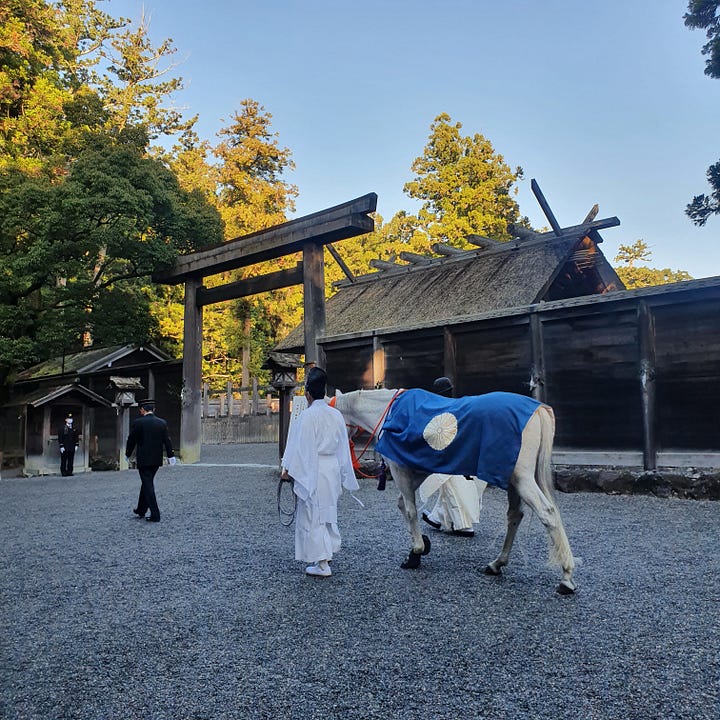
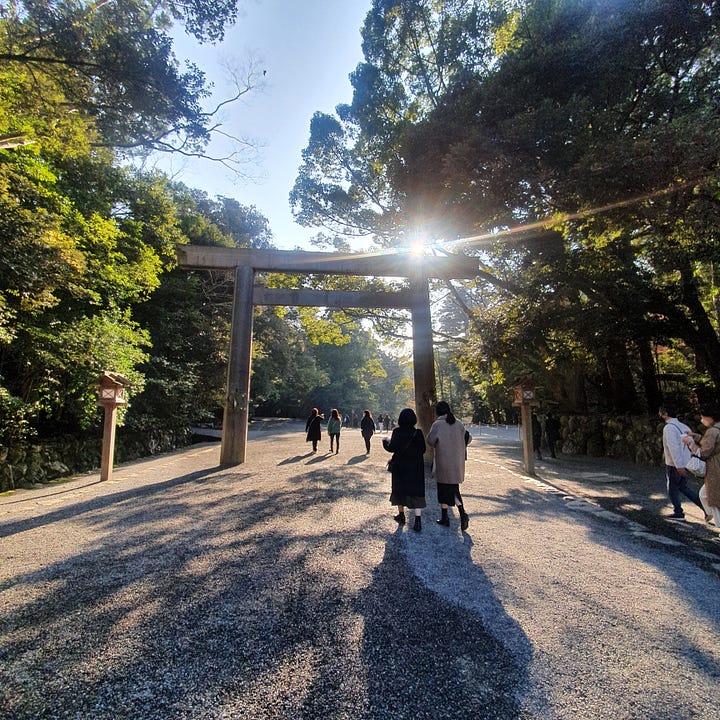
Despite its long history and its splendor, Ise Jingu is not a world heritage site, most likely because of this process of rebuilding. The writer Mishima Yukio was a proponent of the ceremony, and wrote about Ise Jingu in his book Cultural Defence,
“The new Ise shrine is always the original, and at that point the original perishes, leaving the copy to take on the life of the original, and the copy itself becomes the original.”
A pause in the works
Despite its historic continuity, the ceremony has faced interruptions throughout the centuries. In the late Muromachi period, financial hardships put a halt to the rituals until Oda Nobunaga—a respected figure in Japan's unification—revived it. The ceremony faced another pause after World War II, suspended by the GHQ in 1949, but it resumed in 1953. Preparations for the upcoming ceremony are already underway, with the last event incurring costs of about 55.8 billion yen. Given rising labor and material costs, the shrine is committed to sustainable practices. For instance, components such as the torii gates are sent to other shrines across the country after their use at Ise, promoting a cycle of recycling.
The indispensable role of wood
At the heart of Ise Jingu's beauty lies the profound significance of wood. The shrine is enveloped by lush forests, full of broad-leaved and coniferous trees—such as camphor, cedar, and cypress. Among them, sakaki, a sacred evergreen, symbolizes youth and purity.
In Shinto belief, forests are not just landscapes; they are considered sacred dwellings for the gods. Since ancient times, trees have been revered for their longevity and the mysterious life force they embody, occupying a cherished place in the hearts of the people.
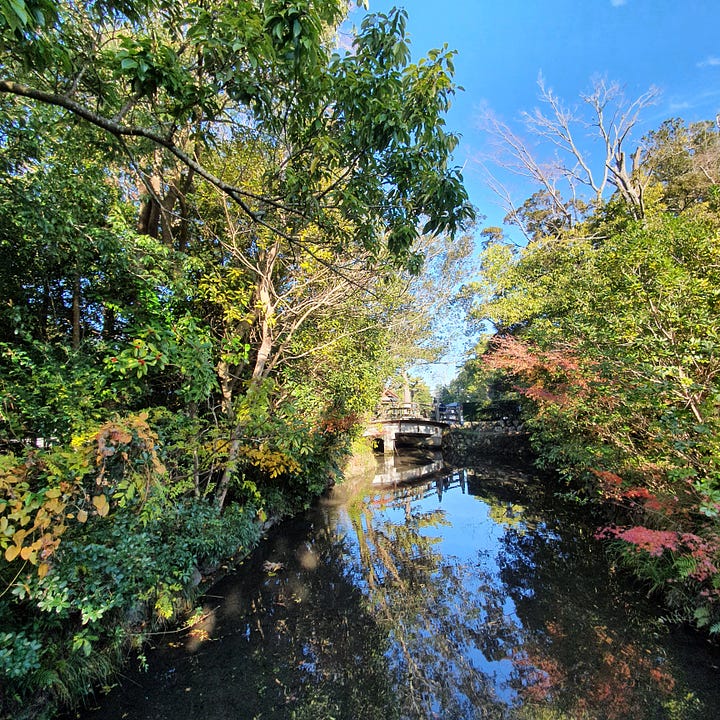
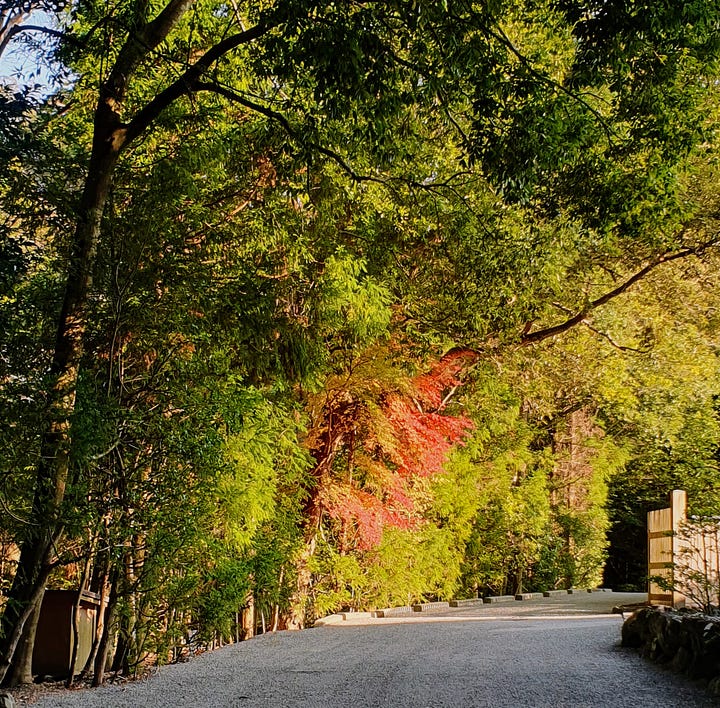
The inner shrine at Ise Jingu, constructed from cypress, showcases traditional Japanese architectural techniques. These structures are built without nails; instead, skilled artisans fit the wooden pieces together with precision.
The shrine is self-sufficient in timber. When timber is harvested for construction, it is accompanied by rituals of prayer and offering, offering gratitude towards the trees.
Visiting the shrine
Ise Jingu is dedicated to Amaterasu Omikami, the ancestral deity of the emperor. In ancient times, only the emperor was permitted to make offerings here, though many parts of the shrine remain restricted. Still, millions come to this sacred site each year to pray. Pilgrimages to Ise Jingu became popular during the Edo period, with visits regarded as a once-in-a-lifetime journey.
The shrine feels like a deeply spiritual place. The quiet energy and passion of the visitors to one of the most sacred sites in the country, permeates the air. Although there are many people, there is a respectful atmosphere. The deep forest surrounding the shrine, with ancient trees all around enhances this experience.
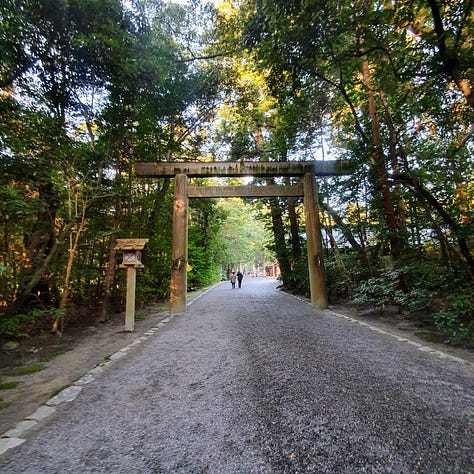
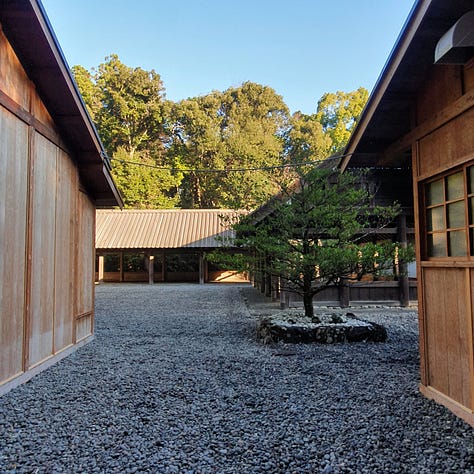
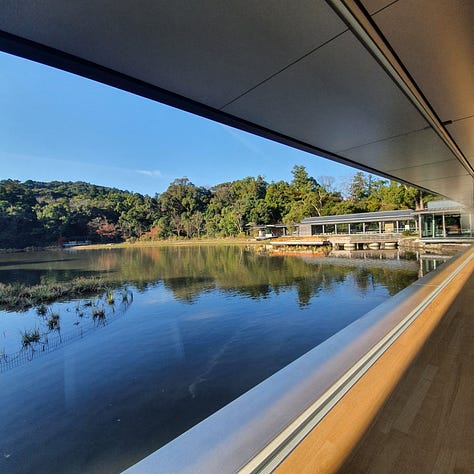

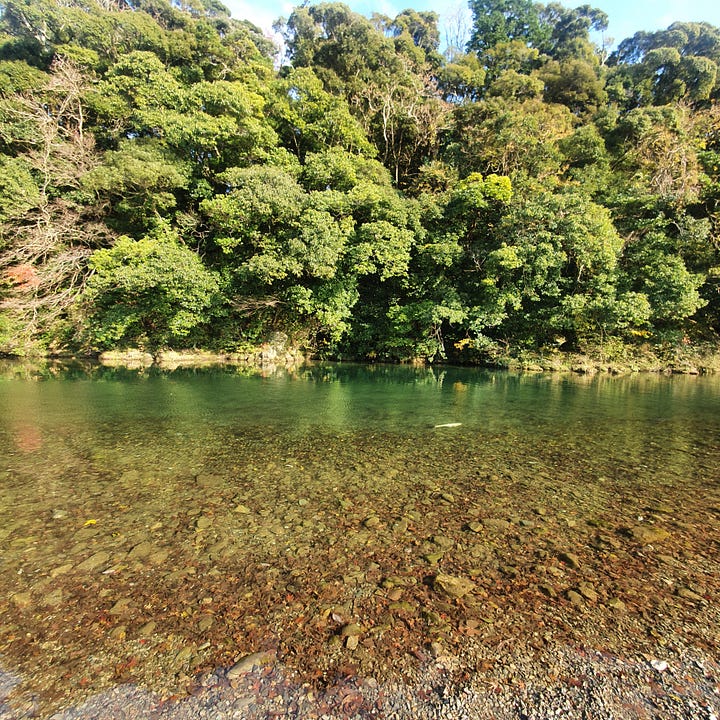
During the early hours of the day, when crowds are lighter, and the soft morning light filters through the canopy of leaves, a walk through the tranquil forest is enchanting and deeply moving. The surrounding trees, many of them over a hundred years old, stand over you like guardians. A river flows outside. The sounds, shapes, and colors of the river, the Jingu, the visitors, and the trees moving in the wind intermingle in one’s mind to create a harmonious convergence of nature, spirituality, and society.
Access - Find out more here
Selected Sources
https://www.yomiuri.co.jp/national/20240410-OYT1T50029/
https://www.isejingu.or.jp/sengu/senguhistory.html
https://discoverjapan-web.com/article/115886
https://www.isejingu.or.jp/nature/
https://www.bunka.pref.mie.lg.jp/rekishi/kenshi/asp/arekore/detail.asp?record=64
文化防衛論 (ちくま文庫 み 13-13)



A resident of Izumo might take offense at Ise being “the most important” shrine :)
Izumo Taisha is rebuilt every 60 years with the last one finishing around 2013 so there’s going to be quite a wait for the next one
I loved going here two years ago.